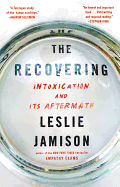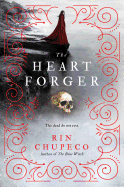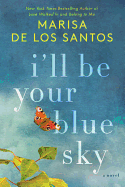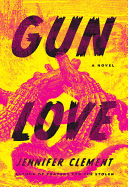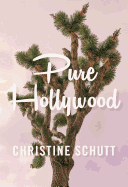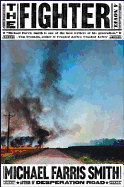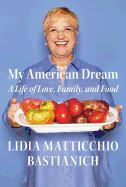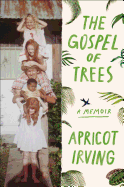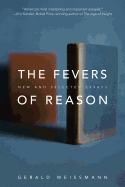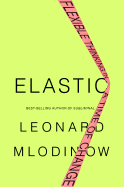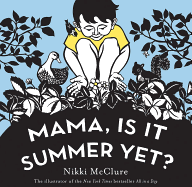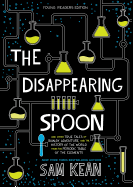Week of Friday, April 6, 2018
Springtime brings warmer weather, blossoming flowers, sunshine and a feeling of possibility. It's the perfect season to read books about renewal and hope. Take one of these books outside and welcome the season with some al fresco reading! The link to spring is evident in the title of The Language of Flowers by Vanessa Diffenbaugh, but this novel also tells a story of rebirth. Victoria, 18, has aged out of the foster care system and must survive on her own after a childhood of being unloved. Her knowledge of flowers and their meanings saves her life, both figuratively and literally, in this compelling story about connections and awakening.
The link to spring is evident in the title of The Language of Flowers by Vanessa Diffenbaugh, but this novel also tells a story of rebirth. Victoria, 18, has aged out of the foster care system and must survive on her own after a childhood of being unloved. Her knowledge of flowers and their meanings saves her life, both figuratively and literally, in this compelling story about connections and awakening.
Rhoda Janzen wrote the warm, very funny memoir Mennonite in a Little Black Dress to tell the story of her return home to her Mennonite roots to start fresh after her life falls apart.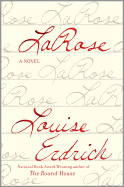 The poignant novel LaRose by Louise Erdrich begins with tragedy as Dusty, a Native American boy, is mistakenly shot by Landreaux, the father of his best friend. Devastated, Landreaux borrows from old traditions and gives his own son, LaRose, to the mourning family. Two families begin along a path of healing and hope, thanks to one little boy.
The poignant novel LaRose by Louise Erdrich begins with tragedy as Dusty, a Native American boy, is mistakenly shot by Landreaux, the father of his best friend. Devastated, Landreaux borrows from old traditions and gives his own son, LaRose, to the mourning family. Two families begin along a path of healing and hope, thanks to one little boy.
Spring means the start of wedding season. Something New by Lucy Knisley is a charming, funny graphic memoir that follows the author's wedding plans from start to finish. Fans of Knisley's other graphic memoirs, including the foodie favorite Relish, will recognize her sense of humor and whimsical drawings.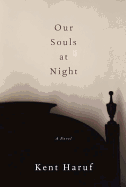 Love isn't just for the young. Folks in the autumn of their lives can also experience a renewal, as in Our Souls at Night by Kent Haruf. In this brief but tender and moving story, two lonely, elderly people get a second chance at happiness.
Love isn't just for the young. Folks in the autumn of their lives can also experience a renewal, as in Our Souls at Night by Kent Haruf. In this brief but tender and moving story, two lonely, elderly people get a second chance at happiness.
Grab a book and head outside to celebrate spring! --Suzan L. Jackson, freelance writer and blogger at Book by Book
Paris Metro
by Wendell Steavenson
Paris Metro by Wendell Steavenson (Circling the Square) is sophisticated novel in both its politics and its treatment of the family drama at its heart. Like Steavenson, her protagonist, Catherine ("Kit") Kittredge, is a journalist who's spent most of her professional life traveling from one hot spot to another around the world. While in Baghdad following the U.S. invasion in 2003, she meets and eventually weds Ahmed Solemani, the son of a murdered Iraqi diplomat, whose ambition is matched only by his penchant for concealment. Kit undergoes an express conversion to Islam solely for the purpose of their marriage, and a short time later discovers her husband will be bringing a son from his first marriage--the boy Kit calls "Little Ahmed"--into the relationship.
The ill-matched pairing predictably falters and fails, and Kit finds herself in Paris with Little Ahmed in the fateful year of 2015--bracketed by the terrorist attack on the satirical magazine Charlie Hebdo, to which she has a deeply personal connection, and the mass killings centered on the Bataclan theater. Kit's despair over these events is heightened by her fear that her adopted son, now 13 years old, is falling under the influence of a radical imam.
Steavenson thoughtfully portrays Kit's growing distress. By the novel's climax, events have moved Kit closer to a more sophisticated understanding of the dangers in an early-21st-century world, but Steavenson never suggests there will be any easy solutions to these conflicts. Fans of work by Graham Greene or John le Carré will find much to admire in the engrossing Paris Metro. --Harvey Freedenberg, freelance reviewer
Discover: The political and the personal intertwine in this story of a journalist struggling to bridge the divide between Islam and the West.
I'll Be Your Blue Sky
by Marisa de los Santos
Clare Hobbes believes in love: in fierce devotion and steadfast kindness. She's grown up surrounded by deep love--from her mother, her almost-mother, Cornelia, and the jumbled but joyous family they began constructing together in Marisa de los Santos's debut novel, Love Walked In. Now, as a young woman on the cusp of marriage, Clare finds herself facing a wrenching decision about whom, and how, to love. In her fifth novel for adults, I'll Be Your Blue Sky, de los Santos weaves Clare's story together with that of Edith Herron.
Days before her wedding, Clare meets Edith, an elderly woman whose wise counsel and compassion give Clare the strength to break off her engagement. Several weeks later, Clare learns that Edith has left her a house--Blue Sky Cottage--with a mystery attached. Captivated by the house itself and intrigued by the photos (taken by Edith) adorning its walls, Clare begins digging into the woman's background with the help of her best friend, Dev. The two trace Edith's movements all along the mid-Atlantic coast and back up to the Canadian border, while Clare struggles to navigate the shifting geography of her own heart. As de los Santos's two narratives unfold side by side, readers can see two brave women, decades apart, struggle to do the right thing for themselves and for those they love.
Tender and insightful, I'll Be Your Blue Sky is a richly layered story that will nourish both longtime and new readers of de los Santos's work. --Katie Noah Gibson, blogger at Cakes, Tea and Dreams
Discover: Marisa de los Santos's fifth novel is a mystery, a love story and a captivating narrative of two strong women.
Gun Love
by Jennifer Clement
Pearl has spent her entire life residing in a 1994 Mercury, in the visitor's lot of a Florida trailer park. Her teenage runaway mother parked the car, intending to stay temporarily. More than a decade later, the two still call the Mercury home. Pearl lives in the front seat and her mother in the back. Neither is unhappy with their situation, and their love for each other is unconditionally strong. Pearl attends school but has few friends. Her mother is all she needs--until Eli arrives.
The gun culture in Florida has always surrounded mother and daughter, but with the advent of Eli, it permeates the quiet safety of the sedan home and changes the entire trajectory of the pair's life.
Jennifer Clement's (Prayers for the Stolen) enchantingly poetic novel about family, love and resilience is plopped down in the midst of the debate about guns in the U.S. All around Pearl and her mother, people covet their firearms. The juxtaposition of these powerful themes, reflected subtly in the book's title, will strike readers forcefully, as will Clement's breathtaking use of language and imagery. Her sparse, well-chosen words have the force of a fired bullet: "I knew he was not a strong white flag of a person but was put together with scraps of Scotch tape and a few staples and glue."
Gun Love's ammunition piles up: dynamic, tragic characters, Pearl's strong voice, and a sense of place so acute, readers will cringe from the stench of the nearby dump. Clement has definitely hit the mark with Gun Love. --Jen Forbus, freelancer
Discover: A young girl and her mother live in their car, surrounded by a community in love with guns, until a man walks into their lives and changes everything.
Pure Hollywood: And Other Stories
by Christine Schutt
Christine Schutt traffics in literary realism, but her stories are filled with ghosts. Death--past, imminent, right before our eyes--looms over most of the 11 stories in Pure Hollywood. In "A Happy Rural Seat of Various View: Lucinda's Garden," a newly married young woman accidentally kills an animal while driving a gardener's minicar; later, she disappears. In "Species of Special Concern," a man is certain that he understands a renowned lepidopterist and identifier of species better than the dying woman's husband does. In the title novella, a failed young actress, recently widowed by a decades-older comedian, loses her home to the grown children from his first marriage. Moreover, there's no scarcity of flawed parenting on parade in Pure Hollywood.
Schutt (whose novels include the seductive marital atomization Prosperous Friends and the 2009 Pulitzer Prize finalist All Souls) leavens her dispiriting subject matter with the spryest of prose, arranging words in effortlessly euphonious combinations: "Leaf-fall, stomped to leaf-meal, dusts her shoes." A cranky woman makes "tough, irritated pickax sounds with words like crap, drink, think." The mother of a baby hears "the tuneless xylophone of his bottle banged against the crib slats." Schutt's extraordinary command of language can go only so far to vitalize her wispier pieces--one is two pages long--but hardly a sentence scuds by that's not like a bloom from one of Pure Hollywood's many gardens. Of course, flowers only affirm this collection's funereal air. --Nell Beram, author and freelance writer
Discover: Christine Schutt's crystalline stories are written with an agility that leavens her bleak subject matter.
Mystery & Thriller
The Fighter
by Michael Farris Smith
The Fighter by Michael Farris Smith (Rivers and Desperation Road) is the story of the orphan Jack Boucher. His long road of institutions and foster homes ends on the 200 acres of the never-married Maryann, who raises him with the only love he's ever known. With few skills besides willfulness and a strong physique, Jack leaves at 17. He aims to make his way as a bare-knuckle cage fighter on the backwoods circuit filled with "men who killed dogs with other dogs." They are "a suffocating mass of the drunk and disturbed."
After some years of success, Jack sustains a massive concussion and, after self-medication with pills and booze, his battered body finally gives out. In his 40s, he drags himself back to Clarksdale to see Maryann as she lies with advanced dementia in a nursing home. Her multigenerational home is in foreclosure, and Jack owes $12,000 to the vicious local loan shark Big Momma Sweet. Good luck at a Natchez casino brings him enough to cover his nut, but bad luck rears its head when his truck crashes and the money disappears while he stumbles to get help.
Winner of the 2014 Mississippi Author Award and born in Mississippi to a Baptist minister, Smith writes with the Delta river silt and cotton fields in his blood. In the tradition of the Mississippi literature like Faulkner and Larry Brown, The Fighter is rich in character and landscape but, more insidiously, in the hard life and meager hopes of those who live there. --Bruce Jacobs, founding partner, Watermark Books & Cafe, Wichita, Kan.
Discover: The Fighter is the raw story of a broke-down Mississippi cage fighter searching for deliverance in whatever form it appears.
Biography & Memoir
The Recovering: Intoxication and Its Aftermath
by Leslie Jamison
While Leslie Jamison (The Empathy Exams) follows the recovery memoir's common arc in The Recovering, her scope is significantly broader. She draws on the stories of several others and their contributing social forces. What does it mean to be a white woman struggling with addiction? What does it mean for a writer to be an alcoholic? The result is a staggering investigation into cultural assumptions about addicts, and a necessary critique of a literary scene that idolizes the drunken genius.
At the Iowa Writers' Workshop, "I spent my days reading dead drunk poets and my nights trying to sleep with live ones." Jamison contends with the legacies of literary lushes like Charles Jackson (The Lost Weekend) and John Berryman (The Dream Songs), among many other men who garnered reverence for their vices. Meanwhile, women such as Jean Rhys (Wide Sargasso Sea) and Billie Holiday (Lady Sings the Blues) drew only scorn for theirs. Moreover, Jamison digs into Bill Wilson's history and the 12-step program he spawned. Alcoholics Anonymous becomes a touchstone for her while she peels back myths of alcoholism as a creative force and breaks through to something fresh: "Thinking of addiction in terms of generative variation is the luxury of someone who hasn't spent years telling the same lies to liquor-store clerks."
More than most in the genre, The Recovering focuses on the aftermath--the frustrating realities and surprising joys of staying sober. Jamison emphasizes the perennial nature of recovery. Stability is indeed a humble, messy persistence within a culture that craves simple narratives about addiction and sobriety, genius and madness. --Dave Wheeler, associate editor, Shelf Awareness
Discover: Empathetic and unflinching, The Recovering offers a refreshing antidote to narratives that would marry substance abuse to creativity.
My American Dream: A Life of Love, Family, and Food
by Lidia Matticchio Bastianich
As a little girl in Istria, Lidia Bastianich plucked figs straight from the tree for breakfast and tended her grandmother's goats. She fished in the Mediterranean. She played in the streets of Pola. Her biggest fear was that her grandfather would catch her sneaking cherries from his trees. But over the years, larger fears crept in; Bastianich lived in a part of Italy that had been ceded to Yugoslavia following World War II, under communist dictator Tito. Violence grew ever closer to home. Eventually, her family fled.
The Bastianiches waited two years at San Sabba refugee camp in Italy--formerly a concentration camp--for a country that would take them in permanently. "I didn't have an identity; I was neither Yugoslavian nor Italian. I was like a leaf in the wind."
But she became American. In her inspiring, vividly detailed memoir My American Dream: A Life of Love, Family, and Food, Bastianich explores how that came to be.
When her family moved to New Jersey in 1958, Bastianich immediately embraced her new country and growing identity as an American. She worked, saved, fell in love and started college. Then she started a restaurant--and then another, and then another. In the ensuing decades, she wrote more than a dozen cookbooks, starred in cooking shows and founded her own brand.
Her legions of fans know her as warm and effusive, and My American Dream is no different. Wisdom peppers her reflections on her life, infused with deep love for family and country--and food, too. --Katie Weed, freelance writer and reviewer
Discover: In this deeply personal memoir, beloved celebrity chef and matriarch of an Italian food empire Lidia Bastianich reflects on the experiences that shaped her life.
The Gospel of Trees
by Apricot Irving
Apricot Irving's parents were farmers in California when they decided to be missionaries and move with their three young daughters to the north of Haiti. Over nine years, her father planted trees to combat deforestation. As he committed himself to the country and his own goals of saving it, he grew more distant from his family--eventually violent--and more resentful of their privilege and status as outsiders. While they had been poor for California and lived in a cabin without an indoor toilet, in Haiti they were treated as foreign dignitaries, a startling shift. They were also demoralized by the failures of their humanitarian projects, and the knowledge that even if they succeeded, their actions would never be enough to help everyone.
Set against a history of colonialism and political unrest, Irving presents a nuanced look at her childhood and the place where she spent it, both of which are too complex for her to describe easily. "The missionaries I grew up with were neither marauders nor saints; Haiti was neither savage nor noble," she writes. "The truth was far more complicated." She paints these contradictions thoughtfully, and while she both loved and hated living there when she was young, it formed who she is as an adult. With evocative prose and electrifying scenes, The Gospel of Trees shows how a woman reconciles the pain and beauty of the religion, family and country she was exposed to as a girl. --Katy Hershberger, freelance writer, bookseller and publicist
Discover: A considered and compelling memoir about girlhood as a missionary's daughter in Haiti.
Science
The Fevers of Reason
by Gerald Weissmann
Essayist Gerald Weissmann has a storied career as a physician, so it's no surprise that The Fevers of Reason, a collection of new and previously published works, focuses on the moments where art and science intersect. The pieces expertly hopscotch across all sorts of topics--rheumatology, Viennese art in the early 20th century, the genesis of Sherlock Holmes, RNA sequencing. Throughout the book, Weissmann's humanist, sometimes sardonic, voice binds together disparate strands to show how all human endeavor is linked in one way or another.
There are particular subjects that are close to Weissmann's heart, and appear more than once; the Nobel Prize and the percentage of American winners who were immigrants is one. He makes strong cases for immigration throughout the book, showing how welcoming the refugees who fled Nazism created medical breakthroughs in the United States. But Weissmann also takes time to focus on unheralded women in medicine, especially Elizabeth Blackwell, the first woman to graduate from a U.S. medical school. "Dr. Blackwell Returns from London" charts her career, showing how she paved the way for generations of women physicians to come. Weissmann clearly sees how history obfuscates the work of women, people of color and immigrants, and tries to alter that.
While he can lapse into jargon on occasion, Weissmann's prose is usually polished and funny, and anyone with an interest in American scientific or literary history will enjoy this collection, especially if they're already medically inclined. --Noah Cruickshank, adult engagement manager, the Field Museum, Chicago, Ill.
Discover: The Fevers of Reason is a collection by physician and essayist Gerald Weissmann about science, art and humanity.
Elastic: Flexible Thinking in a Time of Change
by Leonard Mlodinow
We are taught that analytical thinking is the appropriate response to situations that require a problem to solve. However, a deliberate, step-by-step approach is not particularly well-suited for the rapid changes of the 21st century. Instead, physicist and author Leonard Mlodinow urges us to embrace elastic thinking if we want to thrive in this unprecedented age of change.
Thanks to our advanced brains, elastic thinking was key to the evolution of the human species. In today's world, where "we consume, on average, a staggering 100,000 words each day from various media," our tolerance for new information, constant progress and creative solutions is achievable thanks to elastic thinking's bottom-up approach to problem solving. While our top-down analytical brains dismiss unusual or seemingly illogical solutions to problems, our elastic brains allow us to consider ideas from different angles. Daydreaming, or "thinking without thinking," is crucial to the development of new ideas; Mary Shelley was unable to rise to the challenge of telling a ghost story until she let her mind wander and conceive Frankenstein. Just as important, frozen thinking--or thinking that resists "accepting nonconformist ideas"--stands in our way, as illustrated by General Stanley McChrystal's analysis of how Israel failed to anticipate obvious warning signs leading up to the Yom Kippur War.
With humor and insight, Mlodinow (a former writer for MacGyver and Star Trek: The Next Generation) takes readers for a tour of the brain and provides opportunities to test our own thinking with riddles, puzzles and quizzes. With elastic thinking, you'll never approach a problem the same way again. --Frank Brasile, librarian
Discover: Steeped in research and never boring, Elastic helps readers explore new and creative ideas so we can excel in a rapidly accelerating world.
Children's & Young Adult
The Heart Forger
by Rin Chupeco
By the conclusion of The Bone Witch, Tea had tamed the monstrous, three-headed dragon-like daeva known as the azi and led the capture of one of the Faceless, Aenah, a bone witch turned fully to the Dark. In the story's alternate thread, which features an older, wiser Tea preparing to take revenge on those who have wronged her, she raised her lover from the dead to become one of her familiars.
In this second installment of the series, Tea and her brother Fox (her first familiar) visit the kingdom of Odalia to search for her mentor Mykaela's heartsglass. Like all the children in Odalia, on Mykaela's 13th birthday, her emotional core was spelled into a magical case to keep it safe from treachery and heartache. Years ago, the adult Mykaela foolishly gave her heart (and heartsglass) to King Vanor, knowing that if he rejected her but kept the heartsglass, she would die. Even though Tea is an extremely powerful necromancer, she cannot compel the dead King Vanor to reveal where he hid Mykkie's glass. And, as she works to save her mentor, Tea finds herself fearful of her own growing abilities, worried she may, like Aenah, come to "crave... the Dark beyond her own limits." When the prince of Odalia falls victim to a sleeping disease, Tea begins yet another hopefully heroic journey to find a cure. Meanwhile, in the alternate thread, future-Tea invades the kingdom of Daanoris, bent on harming old enemies, Faceless and royal alike.
Chupeco has crafted a glorious world for her twisting, turning plot, rich with magic, exotic beasts, romance and treachery. The alternating narratives are masterfully designed, drawing readers ever closer to their inevitable convergence. A mesmerizing tale, this sequel is even stronger than its precursor. --Lynn Becker, blogger and host of Book Talk, a monthly online discussion of children's books for SCBWI
Discover: In this sequel to The Bone Witch, Tea struggles to keep the eight kingdoms safe from monstrous daevas as well as from the dangerous Faceless Dark asha who seek power and immortality.
Mama, Is It Summer Yet?
by Nikki McClure
"Mama, is it summer yet?" a little boy asks his mother as they look out the window at bare tree limbs, a pair of mittens warming on the radiator under the sill. "Not yet, my little one./ But the buds are swelling./ Soon new leaves will unfold."
In a lyrical ode to the sweet anticipation of a new season, the board book version of Nikki McClure's Mama, Is It Summer Yet? will captivate readers young and old. Striking cut-paper artwork balances beautifully with McClure's gentle, almost old-fashioned text. As winter gives way to spring and beyond, the boy and his mother clear the garden space, plant seeds, build a windsock and wait for the fruits of their labor--strawberries, for starters. Nature's changes are at the center of McClure's book. Swallows swoop with fantastically long, intertwined tail feathers. A squirrel builds her nest on a branch with tiny buds. The boy and his mother paddle through a marsh where ducklings "grow big and bold." Eventually, the two enjoy books on a blanket under the now blossoming tree. Throughout, the boy's refrain returns: "Mama, is it summer yet?" Again and again, his patient mother responds with "Not yet, my little one. But..." until, inevitably, the answer turns to a joyful yes.
Nikki McClure (To Market, to Market; In; Waiting for High Tide) captures the loving, playful bond between mother and son. Black-and-white art is accented with splashes of color that grow ever bolder as summer draws near: a lilac windsock, pink blossoms, red strawberries. This thoroughly pleasing board book offers young readers an opportunity to absorb themselves in the simple, hopeful gifts of the seasons. --Emilie Coulter, freelance writer and editor
Discover: In this perfect little board book, Nikki McClure uses cut-paper artwork and loving, lyrical text to celebrate nature, changing seasons and the bond between mothers and sons.
The Disappearing Spoon: And Other True Tales of Rivalry, Adventure, and the History of the World from the Periodic Table of the Elements
by Sam Kean
A "treasure trove of all our passions and obsessions," the periodic table of the elements is more than a turreted catalogue of the different kinds of matter in the universe. "The periodic table is... an anthropologic marvel, a human artifact that reflects all of the wonderful and artful and ugly aspects of human beings and how we interact with the physical world." In this young readers edition of his bestselling The Disappearing Spoon, science writer Sam Kean (Caesar's Last Breath) presents the wide-ranging history, conflict, rumors and science behind each element, from discovery to present-day use.
Kean tells of bitter custody battles over element discoveries; fierce competition among nations and individual scientists to claim naming rights; and sometimes humorous, often insanely dangerous exploits in the name of science or power. During the 1990s, a 16-year-old Boy Scout decided to try to solve the world's energy crisis by building a nuclear reactor in his backyard shed. In the sixth century BC, a Babylonian king had his palace walls painted yellow with an antimony-lead paint mixture and went mad--antimony (element 51) is highly toxic. And, yes, it is possible to make a spoon disappear in your cup of tea, as long as that spoon is made of the easily meltable element 31, gallium.
The Disappearing Spoon reveals how gloriously and dangerously intertwined everything truly is, and not just chemically speaking. Kean wraps his exploration of elements in history, politics, mythology, warmongering, philosophy and more: "I realized that there's a funny, or odd, or chilling tale attached to every element on the periodic table. At the same time, the table is one of the great intellectual achievements of humankind. It's both a scientific accomplishment and a storybook...." This "storybook" will encourage young readers to brave the elements of science. --Emilie Coulter, freelance writer and editor
Discover: With wit and scientific savvy, Sam Kean tells the stories behind each of the elements in the periodic table in this middle-grade adaptation of The Disappearing Spoon.



